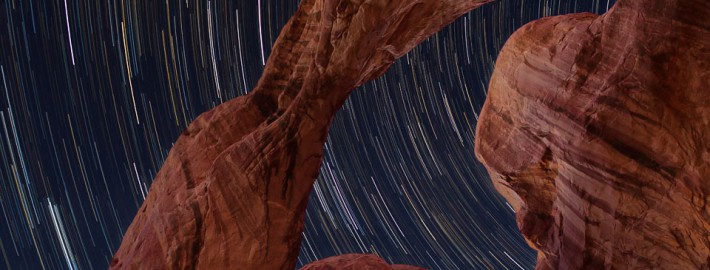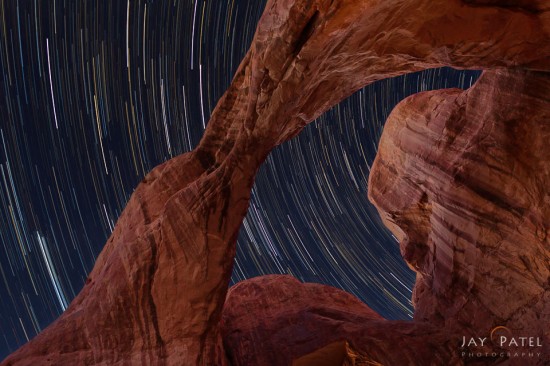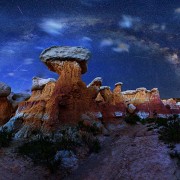Top 3 Misconceptions about Night Photography to Ignore
Night photography has intrigued landscape photographers for decades… and with good reason. Night photography is just plain fun! I’ve been teaching night photography workshops for about five years. One thing I’ve noticed is that there are a few consistent misconceptions about making photos at night. These misconceptions often deter beginner landscape photographers from photographing at night. If you’ve never tried night photography and think that it’s beyond your capabilities, I’m here to tell you that you may be pleasantly surprised at how easy it is to capture stunning photos of the Milky Way, the stars and more at night.
So let’s start by debunking some of the myths surrounding night photography:
Myth #1: I need expensive photography equipment to capture night photos
I’m happy to tell you, to get started in night photography, you do not need to invest in any special filters, new camera, new lens, or any other items. I will be first to admit that a few specialized photography accessories may help your night photography workflow once you’ve learned how to capture basic pinpoint star images. For example a camera lens with a wide aperture and remote release will prove useful to improve the quality of your night photos. However you do not need specialized photography equipment to get started photographing at night.
To begin with night photography, all you need is the DRLS or mirrorless camera, a wide angle lens, your tripod, and a clear night sky with few to no clouds. If you are using a full frame DSLR or mirrorless camera any wide angle lens with focal length of 35mm or less will work. On the other hand if you have a 1.5x crop factor DSLR or mirrorless camera I recommend a wide angle lens with focal length of 23mm or wider.
Whew… you don’t have to spend more money!
However, if you don’t have don’t have any photography equipment of if you feel like spending a little extra, here are a few suggestions for ideal night photography gear.
- An “ideal” DSLR or mirrorless camera for night photography would be a camera with a full frame sensor. Again this is not required, but is very helpful to capturing night photos. A full frame Mirrorless or DSLR camera tends to be less digital noise, as well as better low light capabilities. I personally try not to push my ISO setting higher than 3200 unless I’m planning on using advanced Photoshop post processing techniques such as photos stacking to reduce noise introduced by high ISO settings.
- An ideal camera lens for night photography would be a wide angle lens with a maximum aperture f/2.8 or greater. It would also be preferable for this camera lens to have very low vignetting, very little lens distortion and excellent sharpness when at its widest aperture setting. An ideal camera lens for night photography can be very expensive. If you are on a budget, renting a camera lense for a night photography workshop may be something to look into.
Myth #2: Night photography is really complicated!
Nope! It looks and sounds complicated, but as long as you have an understanding of manual exposure landscape photography and know your camera, it’s not hard at all.
Wait…I’m supposed to encourage people to attend my night photography workshop. So I shouldn’t say that! But it’s true. Getting started with photographing stars and the Milky Way is quite simple. However if you want to venture into advanced night photography workflows such as exposure blending, capturing star trails, light painting at night, and other fun activities, you’ll need to attend one of my night photography workshops. There… I did my shameless self promotion.
For starters, use these beginner camera settings for photographing at night.
- Start with a tripod, a Mirrorless or DSLR camera and wide angle lens with focal length between 16mm to 28mm.
- Start about 45 minutes to an hour after sunset using ISO setting of 1400 to 2000, Aperture of f/4, with shutter speed between 25-30 seconds. Use your camera’s 2-sec timer or a remote if you have one to avoid pressing the shutter button during the camera exposure. Obviously, those numbers can be adjusted, and depending on your location, you will be making adjustments for light levels. Digital camera’s sensor on your camera can capture a lot more light than you can see with your eyes. You’ll be surprised how many stars you can see in your night photo that you may not be able to see with the naked eye.
- Getting everything in sharp focus at night can actually be difficult. I usually use manual focus mode and focus on something along the horizon prior to dusk. But if you get there too late, see if there are some bright lights on the horizon and use them to focus your camera at infinity. You can also use the moon to lock in your focus setting manually. If there is no moon, try to find a planet. While is is possible to use stars or planet to get sharp focus, it is not my preferred method and beginner night photographer may find it difficult.
- A photography app on your smart phone can be very helpful to plan your night photography shoot. I use the SkyGuide app to plan for my night shoots. Stellarium, The Photographer’s Ephemeris, Go Sky Watch, and other apps are also great.
Myth #3: I need to travel to capture night photos
It’s not necessary to travel to capture night photos, especially when you’re starting out. I recommend that beginner landscape photographers practice night photography locally before investing in an expensive night photography trip. Will you get more stars and less light pollution in a remote location that is ideal for night photography? Of course, but that doesn’t mean you can’t get some decent photos near or even within a city. I live in a city of 1,000,000 people and I took this image #1 in my front yard. I used a flash with a blue gel on it to illuminate the palmetto leaf.
Image #2 is a star trail photo at the same location where the street light across the street lit the palmetto leaves. Star trail photography requires a piece of special photography equipment called an intervalometer (some mirrorless camera have this build into them). Dang… I knew we’d get into spending more money sooner or later. No matter where you decide to make images of the night sky, I highly recommend including foreground in your night photography composition. A photo of stars is just that not as appealing as a photo of stars with some foreground. This will give the viewer a sense of place which makes the night photos feel more personal. They don’t have to be complicated. Trees, mountains, the beach, streams, waterfalls, cityscapes, even the lamppost at the end of the street, can make for great foreground elements for your night photography compositions.
I hope you’ll give night photography a try sometime. Go out on the back deck or over to the nearest park and just practice. Once you’ve achieved those basic pinpoint stars, don’t forget to get some help to take the next steps toward more advanced night photographs like star trails, light painting, and image editing and blending. Above all, have fun!
















